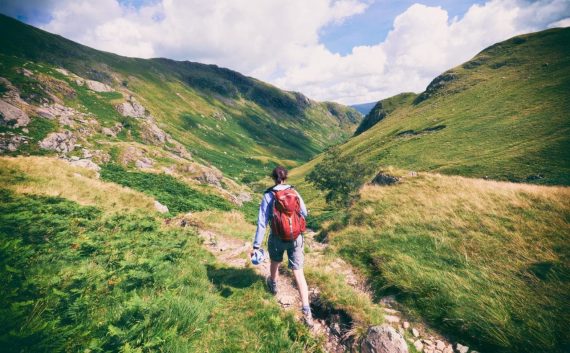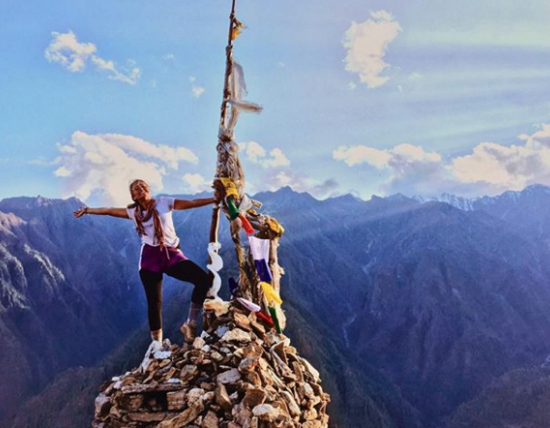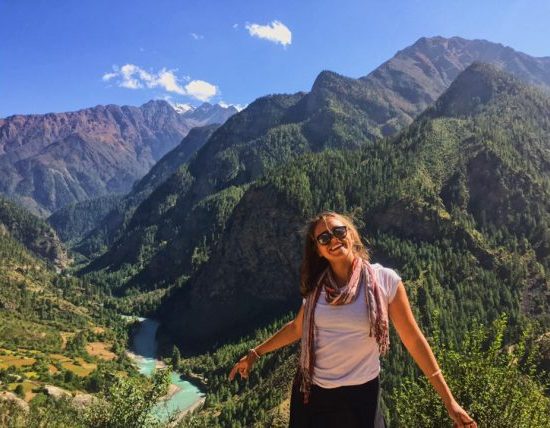
Week 6: Walking
Last week we talked about bikes, this week we’re going to talk about walking. You can tell a lot about an area based solely on taking a walk through it. Different cultures shine through noises, smells, and sights you see while out and about. This week tell us about what it is like walking through the area you’re staying. Are the people around you relaxed or rushing to get to their next location? Are you the only one around or is walking the preferred form of transportation? What is the infrastructure like for pedestrians in your area; is it suitable for use by everyone? Is it a paved pathway or is a gravely dirt road? Lead us on a journey through the place you are staying.
Oneida Shushe
Walking is no doubt my favorite way to see a city. This past weekend, I walked 13 miles through Lyon. Even through the unideal walking shoes and initially rainy weather, I would not have had it any other way.
Walking through a new city
-feels like you’re walking in the shoes of locals, even if many locals take public transportation or drive.
-allows you to see more details in the city than if you sped by on a bike or car.
-positions you to walk into shops and come up with plans and activities spontaneously (“This pâtisserie looks good!” “Someone we just ran into said there are cool ruins down that way, let’s go there!”)
-makes you feel alive (because walking is exercise).
-is an activity all by itself, so if all I did in a new city was walk through it, I would be satisfied.
-is a privilege. Traveling is a privilege for the well-off, and walking (hiking, really) up hundreds of stairs to see the view I’ve included below is a privilege for the able-bodied.
-means you’re walking in the footsteps of many before you (Lyon is 2000 years old!) and many who will come after you (inspired by “Crossing Brooklyn Ferry” by Walt Whitman).

View from the top of the hill in Fourvière district in Lyon, France
Jenny Lundt
There were definitely two distinctive parts of my study abroad experience that revolved around walking. Walking long distances in Kathmandu is certainly not for the faint of heart. As I’ve written about in these blogs previously, it is a very overwhelming city with lots of traffic. There are almost no sidewalks anywhere in the city, so you have to walk on the edge of the road as you simultaneously avoid darting motorbikes, cars, street food carts, and even cows. It becomes a perfect day excursion in itself to navigate the streets. The city is best described as a labyrinth in my opinion, as you wind through miniscule alleyways lined with old buildings.
I had the opportunity of being in Kathmandu for election day. As part of my research, it was very important for me to be out in the city observing and recording all that I possibly could. To eliminate potential security concerns, all vehicles (except ones with special permits) were banned from the streets of Kathmandu from sunrise to sunset that day. That meant, in order to get anywhere in the city, I would have to do what I had never done in the city, walk. I set out just before the first poll opened that day, accompanied by my econ professor friend Tara at Tribhuvan University, the biggest one in the country. We visited several different polls in different areas of the city and had many conversations about what the right to vote meant to several people. It was such an eye opening day that i didn’t realize that my distance for the day totaled 15 miles. Because the dust and particles normally in the air from vehicles were absent, I was also treated to the most amazing view of the Himalayas that is normally hidden. The walk showed me so many parts of the city that I had always failed to notice before because of my need to keep my eyes on the road or risk getting hit. I wandered around, being able to fully grasp the beauty of where I was. A day that I will always remember.
The other important part of my trip was being able to trek through the Himalayas. I talked in an earlier post about Humla, the “most remote” district in the entire country that we had the pleasure of visiting. What I didn’t mention about being there, however, was how we got around. Our excursion there was a little under three weeks where we moved from village to village. With the exception of one day on truck, we were completely dependent on our feet to get from place to place. This lead to a few very long days and aching muscles as we battled the altitude and our physical limits. The last day in particular will be forever etched in our memory. We were trying to get back from the village, Yari, where we had spent the last few days back to the capital of Humla, Simikot. In my homestay, I only was able to eat plain buckwheat pancakes and nettle soup (look them up), so definitely was not energized to my full potential. We had to essentially complete a full 12 hours of excruciating pain almost exclusively uphill. It was a battle of blisters, asthma, altitude, overheating, and general exhaustion, In my life, I am occasionally guilty of taking the easy route. However in this moment, I had the realization that there was absolutely no easy route I could take. No taxi, no Uber, no calling a friend for a ride. No getting a hotel for the night and continuing the journey tomorrow. No dramatic helicopter evac. No nothing, except moving my two feet in front of each other and climbing up the mountain. The feeling of exuberance and pride I felt at the top was something that I have only experienced once. I burst into tears at the top of the mountain and embraced my two best friends from the semester, Mary Grace and Emma and we proceeded to take out a blessed prayer flag and write the names of everyone from home that we wanted to be a part of that moment. I know those flags are still hanging up, dangling over the Himalayas, and that gives me so much happiness, even in my toughest moments back at school.
Micah Dirkers
Building on my cycling post from the previous week, while Edinburgh did have a distinct and broad culture surrounding cycling, the number of bicycles on the street was unequivocally dwarfed by the number of pedestrians throughout the city, particularly in the city center. With nearly 500,000 people the streets of Edinburgh were always bustling with people, particularly on the more central streets such as Prince’s Street and. Whereas bicycle use is efficient on paved roads and reasonably level paths, walking allows for much greater (although sometimes slower) access to much of the city of Edinburgh. There was always ample room on the sidewalks, and sometimes, pedestrians moved as if one side was going down the left of the sidewalk and one group was going down the right. And if you wanted to decrease your travel time, you would adhere to the portion of the sidewalk in the direction that you were moving. Furthermore, walking also functioned far better than a bicycle or car for maneuvering the Scottish highlands, rocky beaches, sand, mud, rivers, streams, and grasslands, which were common encounters when traveling around the UK. These descriptives illustrating how people in Edinburgh walked are as varied, if not more varied, than the observations regarding bicycle use.
Personally, for the vast majority of my local transportation in Edinburgh, I walked everywhere, unless I was going on a longer trip (probably greater than a 30-minute walk)! It was a way for me to go out and explore the city, get some exercise, and navigate the cobblestone streets without being jostled around on a bicycle or a car. The area in which I lived was surrounded by little shops, grocery stores, academic buildings, and a five-floor gymnasium. I was situated on a little hill, St. John’s Hill, on a street called “Colgate,” only a one-letter difference from Colgate. The aroma in the air reflected the flora from the nearby park, the barbecue from the restaurant beneath us, and the petrol from the cars hustling down the street. When I went out to walk, I always felt like I had ample time to prepare for crossings and stoplights. There was ample space on sidewalks, and there were even crossing points, where pedestrians could jaywalk into a designated area in the middle of the road and wait until traffic clears to get to the other side—definitely a very different experience from the US where jaywalking is not encouraged and is considered in some places to be at least a misdemeanor.
While exploring on foot, I had this sense that, because I was on my own two feet walking around, I was in control, and I could go wander around or explore wherever I wanted to, without having to schlep around a bicycle or vehicle. Even when I was traveling around Scotland, most of my destinations required walking (obviously I took a car, bus, train, or plane, when traveling to other destinations) in the form of walking around on a guided tour, taking a hike in the countryside, or simply explore the land freely. This sense of exploration, this sense of freedom, was really refreshing during my time abroad, and it is one, of many, reasons to study in a different place to begin with.





